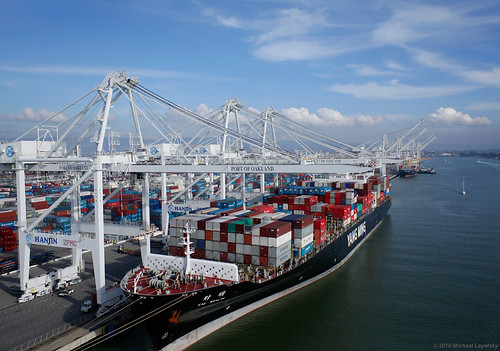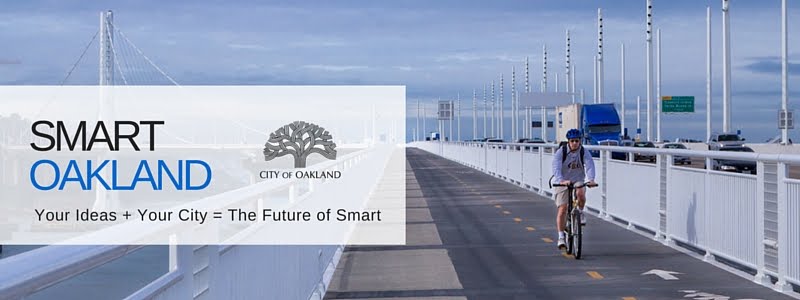
Here are some pilot project ideas that the Port of Oakland has developed as part of their California Sustainable Freight Action Plan.
Project Title: Port of Oakland Supply Chain Efficiency Initiatives
Project Location: Port of Oakland, Oakland, CA (and various)
Project Summary: The following initiatives are intended to improve the supply chain efficiency and cargo flow through the Port of Oakland:
- Implementation of extended marine terminal gate hours – reduces truck wait and transaction times
- Implementation of a grey (common) chassis pool – reduces the need to move equipment around and increases equipment supply
- Implementation of a technology to track performance metrics of trucks moving through the Port area – tracking truck wait times inside and outside marine terminals
- Expansion of Marine Terminal Appointment Systems – fully integrated system would improve user experience and smooth peak congestion for trucks
- Construction of marine terminal gate modifications – improves truck flow and reduces bottlenecks at marine terminal entrances and exits
- Implementation of off-dock depot – allows for exchange of equipment outside Port area

They key piece of this that "smart" or connected technologies could address is the one related to tracking performance metrics of trucks. Where are trucks idling and why? Is it traffic signal delay? Are they waiting for trains? Is it incident-related? How are truckers informed of these delays? Ready access to this information, and incentivizing certain reactions to it, represent interesting smart city possibilities.
ReplyDeleteMy thought on the Port application is that it could further benefit from a high level of information tracking, exchange and use for optimizing schedule, what I would call a "Smart Port" application. The “Smart Port” application would provide additional tracking of goods being shipped, the location of container ships and the location and load of trucks waiting to receive shipments. The additional monitoring information would allow more optimal scheduling of transfers between ship and truck, increasing the amount of goods transferred and reducing the time trucks are held waiting to receive shipments.
ReplyDeleteThe application would require a partnership between the cargo-shipping companies, the trucking companies the Port of Oakland, the City of Oakland transportation staff, providers of data on roadway traffic conditions (City of Oakland, Caltrans, MTC and private providers such as INRIX or HEAR) and private information distributors (such as app developers). This combination of partners would collect the necessary real-time information on the location of goods being shipped, the composition of shipments, the planned distribution of the shipments, location and capacity of the trucks that will distribute the goods and the roadway conditions and traffic level of service on the alternative routes to and from the Port.
Through a cooperative agreement among the partners, transfers between ship and truck would be scheduled and truck operators would be notified of scheduled transfer times and locations. They would also be provided information on traffic conditions and travel time to and from the Port. Possible truck parking locations would be identified to allow the truckers to wait for a scheduled transfer in a location that does not negatively impact the West Oakland neighborhood but allows the trucker to reach the Port at the scheduled transfer time.
By assembling more information about the shipments to be transferred, additional efficiencies may also be possible. This could include greater automation of the movement of shipments within the Port and the transfer between ship and truck. It could also facilitate “double loading”, or coordinating the movement of shipments from ship to truck and truck to ship so that the same trucks could be used for both movements and gaining efficiency in truck and truck driver use.
The benefits of the Smart Port application would be numerous. By increasing the efficiency of the transfer of goods between ship and truck, the amount of goods handled by the Port could be increased. This could increase job opportunities and revenues generated by the Port. It could also lead to an increase in business for companies supporting the Port operations. By reducing the amount of time that trucks are held waiting near the Port for a shipment, the impact of the trucking on the surrounding West Oakland neighborhoods could also be reduced.
Important reference item for this sandcastle: Freight Advanced Traveler Information System (FRATIS): https://www.fhwa.dot.gov/planning/freight_planning/talking_freight/july_2014/talkingfreight07_16_14sf.pdf
ReplyDelete